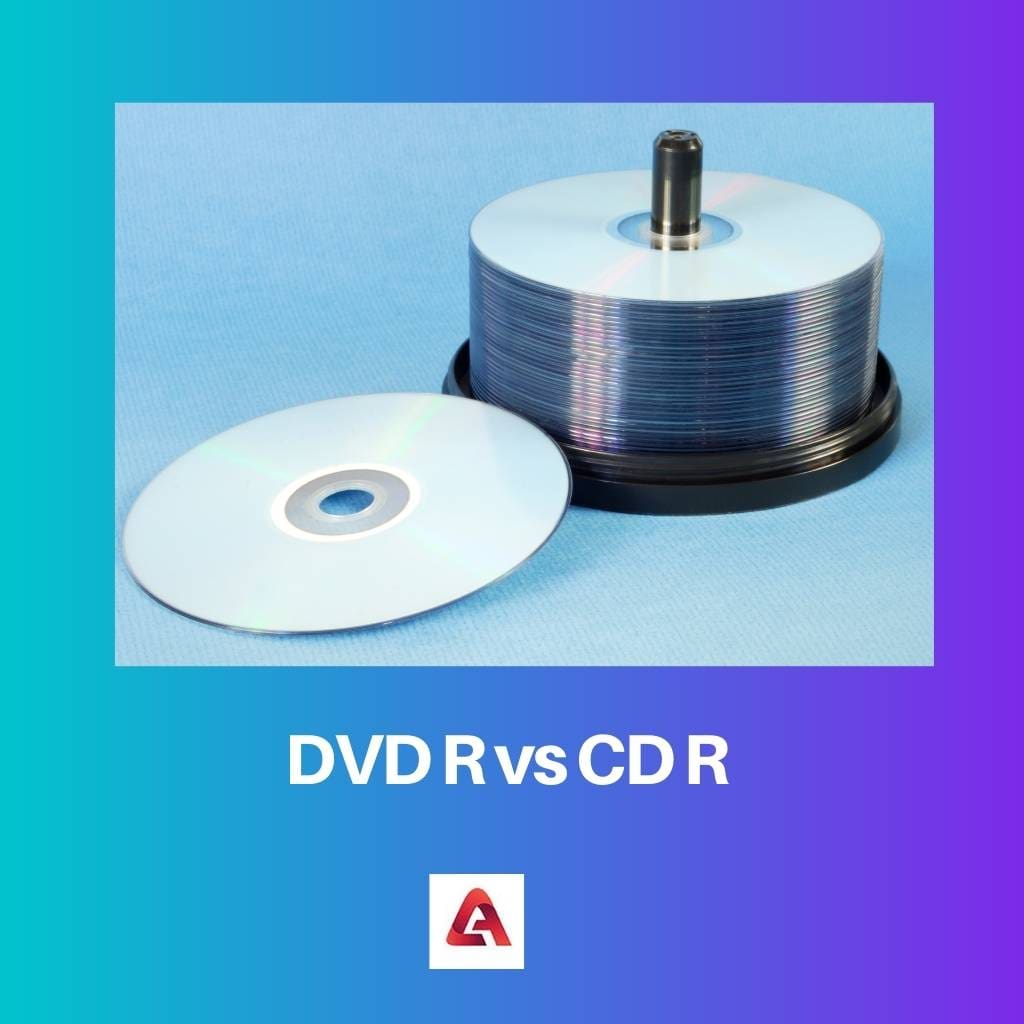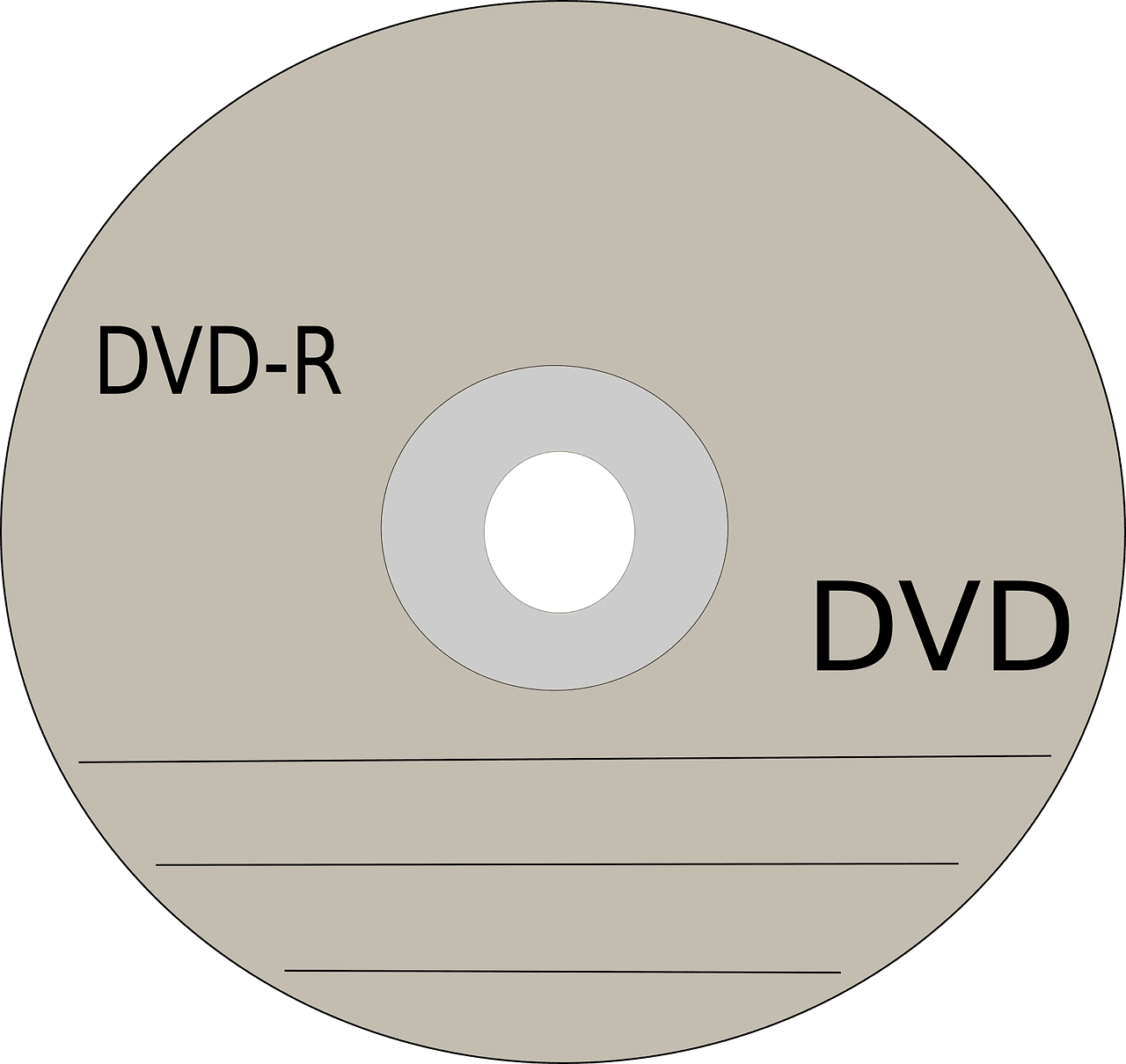Technology is taking over the world every day, and people have started using it in almost every aspect of their life. But this growth has awakened a need to protect the valuable data belonging to many people.
Before, there were all types of tech tools available. People used to store their data either in their minds or in written format. But today, data is stored and shared with the help of many tools.
DVD R and CD R are two such data-storing tools which are being widely used in today’s world. Due to their extensive use, marking a line of difference between the two becomes paramount.
Key Takeaways
- DVD-Rs have higher storage capacity than CD-Rs, allowing for more data or higher-quality multimedia files.
- DVD-Rs can store video in addition to audio and data, unlike CD-Rs, which mainly store audio and data.
- CD-Rs are cheaper than DVD-Rs, but the price difference has become less significant with the decreasing cost of technology.
DVD R vs CD R
DVD-R is a writable DVD which can only be recorded once. It provides more capacity and can hold up to 4.7 GB of data or 120 minutes of video. CD-R is a blank compact writable disk which can be recorded only once. It can hold data up to 700 MB or 80 minutes of audio and has greater compatibility.

DVD R stands for Digital Versatile Disc (Recordable only). The R here denoted the recordability of the disc. It is more of a modern version of Compact Discs and can easily hold more than 4 GB of data in them.
In the year 1997, a Japanese multinational company named Pioneer developed this format of data storage. It is considered the most compatible in all formats.
On the other side, CD R stands for Compact Disc Recordable. The information about this disc was first published by Sony and Philips in the year 1988. Generally, this disc can store up to 700 MB of data, and it is also cheap than the other drive comparatively.
Comparison Table
| Parameters of Comparison | DVD R | CD R |
|---|---|---|
| Full-Form | Digital Versatile Disc (Recordable only) | Compact Disc (Recordable only) |
| Storage Capacity | Can store around 4 Gigabytes | Can store around 600-700 Megabytes |
| Uses | It is used to store data that is higher in storage. | It is used to store data which is relatively less in storage. |
| Data Quality | The data stored in it can be viewed in more clear quality. | It has less clarity while viewing data. |
| Compatibility | It is not compatible with a CD car stereo. | It is compatible with both CD and DVD players. |
| Price | It is relatively expensive. | It is relatively affordable. |
What is DVD R?
DVD R is an abbreviation for Digital Versatile Disc (Recordable only). It is a technology for optical disc recording. In other words, DVD R is used to store data such as music, graphics, etc.
The R letter, in the end, denotes that it can be written only once and can be read many times. As clarified by the DVD forum, DVD-R is not a DVD minus R but a DVD dash R.
In 1997, this technology was innovated by a Japanese tech company named Pioneer. It is the most compatible kind of DVD and is supported by many DVD players. These drives provide storage of around 4.70 GB. It comes in two standard sizes-
- For computer usage, a 12 cm size is available.
- For use in camcorders, an 8 cm size can be found.
Data can only be written once on this drive, but it can be read multiple times. In other words, once the drive is withdrawn, no more data can be entered. However, it does not function well with CD burners and does not check for data errors.

What is CD R?
CD R is a data storage medium that is also portable. It is an abbreviation for Compact Disc (Recordable only). The R in the name signifies that data can only be entered once but read multiple times. This means that once the disc is ousted from the drive, nothing in the data can be modified.
This version of Compact Discs is regarded as the best because it can be read by CD readers manufactured prior to the introduction of this drive. This gives it an advantage over other drives, such as CD-RW drives.
This disc provides data storage up to approximately 700 Megabytes. The data in the disc is packed loosely. Therefore it provides less capacity to store the data. It is an older version compared to the DVD R and is one of a kind.
It is a pioneer in itself in terms of compatibility. It is compatible with both CD and DVD players. In the majority of computers or laptops, a CD drive is included.
The fact that this disc is a multisession optical storing tool is its most important characteristic. It means that different segments of the drive can be captured at various periods of time.

Main Differences Between DVD R and CD R
- While DVD R stands for Digital Versatile Disc (Recordable only), CD R stands for Compact Disc (Recordable only).
- DVD R can store up to Four Gigabytes of data in it, and CD R can store up to 700 Megabytes generally.
- DVD R shows more quality while displaying its data, while CD R shows comparatively less quality while displaying data.
- DVD R costs more compared to CD R.
- DVD R is a less compatible disc drive as it only goes with DVD players, while CD R is a more compatible disc drive as it goes with both CD & DVD players.
- It is not possible to burn a DVD R into CD R burners, but it is possible to burn a CD R in DVD burners.

References
- https://iopscience.iop.org/article/10.1143/JJAP.43.5038/meta
- https://www.spiedigitallibrary.org/conference-proceedings-of-spie/2931/0000/Testing-of-CD-recordable-discs/10.1117/12.248712.short?SSO=1

This article offers a detailed and well-structured comparison between DVD R and CD R, providing readers with an excellent understanding of the differences and technicalities involved.
The article’s comprehensive comparison table and detailed explanations make it an essential resource for understanding DVD R and CD R.
I completely agree. The article’s clarity and depth in explaining the differences and uses of DVD R and CD R make it a valuable read.
The clear explanation of DVD R and CD R, along with their history and compatibility, makes this article a top-notch source for understanding these technologies.
The article provides an extensive level of detail and clarity about DVD R and CD R. It’s an enriching read for all tech enthusiasts.
I couldn’t agree more. The article provides a deep dive into the nuances of DVD R and CD R with intellectual clarity.
Thank you for explaining the history, technical details, and differences between DVD R and CD R in such a clear and concise manner. This makes it easier to understand the distinctions.
The article beautifully explains the concepts of DVD R and CD R, making it an enlightening read. The depth of information provided enhances the understanding of these data storage tools.
Couldn’t have said it better. The article successfully captures the nuances and technical details of DVD R and CD R in an intellectually stimulating manner.
The article’s in-depth coverage and detailed analysis of DVD R and CD R offer an insightful exploration of these data storage tools, making it a great resource for tech enthusiasts.
Completely agree. The article is an exceptional resource for understanding the intricacies of DVD R and CD R in detail.
The article delves into the differences and technical aspects of DVD R and CD R, providing valuable insights for readers.
The comparison table detailing the parameters of comparison between DVD R and CD R provides a clear understanding of the distinctions. It’s a well-structured and informative piece on these data storage tools.
Completely agree. The article meticulously explains the differences and usage scenarios for DVD R and CD R.
The detailed comparison table is beneficial in understanding the technical specifications and key differences between DVD R and CD R. This article is packed with valuable information.
The comprehensive comparison and detailed information about DVD R and CD R in the article make it a compelling read. It’s a top-notch resource for those interested in technology and data storage.
I couldn’t agree more. The depth and detail provided in the article about DVD R and CD R set it apart as a valuable resource for tech enthusiasts.
The detailed comparison table and historical background of DVD R and CD R in the article present a complete and educative read. It’s a valuable resource for anyone seeking information about these data storage tools.
The article is very informative and provides comprehensive insights into the differences between DVD R and CD R. It’s a great read for those interested in technology and data storage.
The article provides a very thorough comparison between DVD R and CD R. It is very informative and easy to understand. I appreciate the detailed explanation of the differences and technical specifications of both data storage tools.
I couldn’t agree more. This is a very well written and informative article!
The in-depth details about the differences in storage capacity, uses, data quality, compatibility, and price of DVD R and CD R are enlightening. This article is an excellent resource for anyone looking to understand the nuances of these data storage tools.
The article effectively highlights the differences and uses of DVD R and CD R. It enhances the readers’ understanding of both these data storage media.
I agree. The article delves into all the essential aspects and provides a comprehensive comparison between DVD R and CD R.